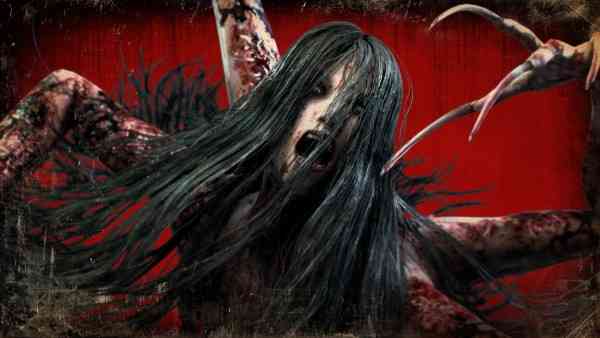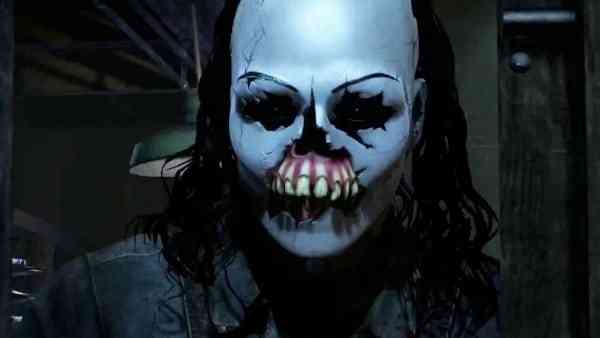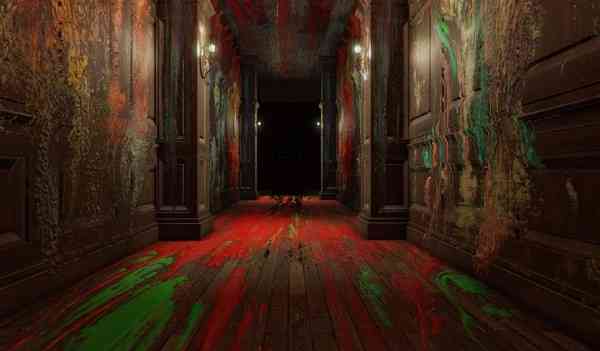For game creators to craft a scary game they need to understand the basics of horror story telling. Those principles are constant no matter what the platform the premise is being delivered on, be it the written word, tv/film, or games. However there are several flavours of horror and depending what type the creator is after, they should bear that in mind when they are brainstorming their game.
If you are willing, I will be most glad to give you a guided tour of what horror is all about. The tour starts beyond this door. Pardon me? Yes, it is rather dark in there, isn’t it? Not to worry. I’ve done this tour thousands of times and have never lost anyone. Not that I remember, anyways. Heheh – just a little joke. Here take this candle. Guard it well though. I don’t have any more matches and it can get quite drafty in spots. Ready? Excellent! Now follow me into the dark. Oh, and one more thing. Watch your step.
Horror can be broken down into three types on an ascending level of fear:
- The Gross-out
- The Horror
- The Terror
While all three operate on different levels of fear they all come from the same defense mechanism – avoidance. Closely linked to these avoidance mechanisms is an additional one – humour. When we face an uncomfortable situation we all react in different ways, to different degrees. Ever sit in a theater watching a horror movie during a particularly intense moment and hear the audience not only screaming but some of them laughing – maybe with an edge of hysteria to it?
_____________________________
“Horror is when the zombies surround you and there is no way out. Terror is when the life you know is gone or changed in some fundamental way or you are unable to find your way back to it.”
Gross-outs are the easiest to pull off. Headless bodies, bodiless heads, corpses, corpses in various states of decay or mutilation, and so on. These are uncomfortable visual cues. Horror is when the zombies surround you and there is no way out. Terror is when the life you know is gone or changed in some fundamental way or you are unable to find your way back to it.
Environmental settings play a big part in escalating the level of each. We are all a little less able to shoo away the monsters when it is dark out; especially when we are all alone. Throw in a hard driving thunderstorm with buckets of rain and top that all off with being isolated and trapped in a spooky location. A haunted house, say. And you have the basic ingredients for fear.
Fast paced video games do best with fear when they focus on the gross-outs. So recent ones like Dying Light, Until Dawn, or the granddaddy of fast paced games like Doom – pile on the monsters and keep them coming at you in a relentless pace. The problem with the gross-out, at least in games, is that the player eventually gets numb to it as the unfamiliar becomes the familiar.
Slower paced games where you have to explore a location and search for replenishing inventory items such as ammo and food and clues as to what has happened, have the time to establish horror. This is where games like the Resident Evil series excel at. These games trap you somewhere, be it in a house or island or laboratory. The gameplay then becomes a balancing act of managing inventory while dispatching monsters at the same time you are trying to escape or find the next save checkpoint. The terror in these games is somewhat negated though because the player is armed and able to defend themselves.
_____________________________
“Games that aim for terror work to get inside your head. Games like the recent Layers of Fear give you a protagonist that is defenseless, no clubs or guns are available. Even inventory options are limited.”
Then there is the even slower paced games, the ones that can instill true terror. On the horror scale, fear becomes stronger and more paralyzing as it becomes more internalized. Mind frakking, if you will. Games that aim for terror work to get inside your head. Games like the recent Layers of Fear give you a protagonist that is defenseless, no clubs or guns are available. Even inventory options are limited.
Games aiming for terror really strive for a sense of isolation. Often such games come with the recommendation to play the game in a dark room with headphones. Horror is so dependent on environmental cues for messing with your head. In books, the pacing slows right down during the scary moments to fully describe all the sensations being felt by the terrorized person. In movies and games, sound is oh so very important. Music and sound cues can really do a lot to increase a person’s sense of unease or dread. Movies have a built-in advantage because one must surrender themselves to the dark to begin with. With games this is optional.
Where games have the advantage over movies is that the experience is so much more intimate. It is you and your monitor a few feet away. If you are willing to go along for the ride and play in the dark with headphones – the experience is almost a twisted womb like one. You lose your identity and become the character in the game. Moving down hallways hearing unsettling sounds with no source can really do a number to your head. This is something horror type shooter games like Dead Space truly mastered.
Each level of horror games uses the same bag of tricks: the jump scare, the misdirect – the use of humour works great here and is a great way of getting a player to lower his guard before springing the real terror element – Until Dawn used this very well, and that old chestnut – what is behind that closed door?, to name a few. The impact of these differ though depending on the game. Opening that closed door when you have a chaingun in hand is quite a different experience than doing so bare-handed.
Another tool to building up tension is the use of journals or narration to give back story or provide insights into the main character. Layers of Fear starts the game in blackness with the character expressing regrets about some unnamed tragedy. It then opens into a main foyer and when you start to explore the environment, you notice the gait of the character is off. There is a hitch and definite limp to his walk. So right off the bat, the game has gone a long way to establishing tone.
Horror games thrive on setting up action set pieces whereas games of true terror slow down the pace with the aim of getting inside your head and making you feel helpless and defenseless. Both are fun gaming experiences. It all depends on what gaming mood you are in. Do you want to get it on in a rock’n roll horror frenzy or do you want to slow down and do a waltz of terror?
What is your favourite horror game and why? Tell us in the comments below.


